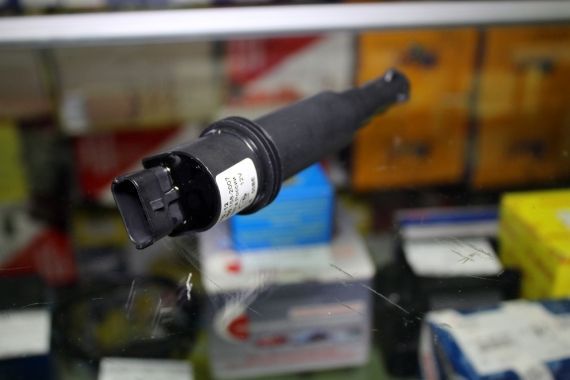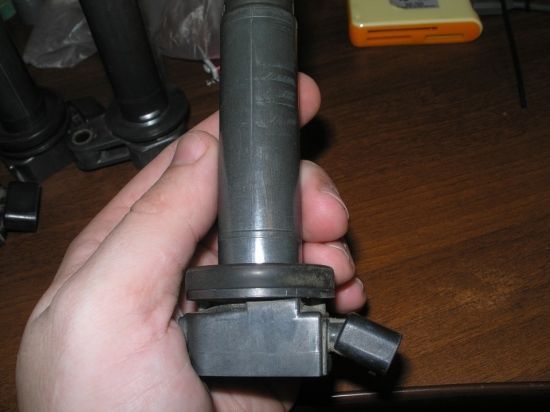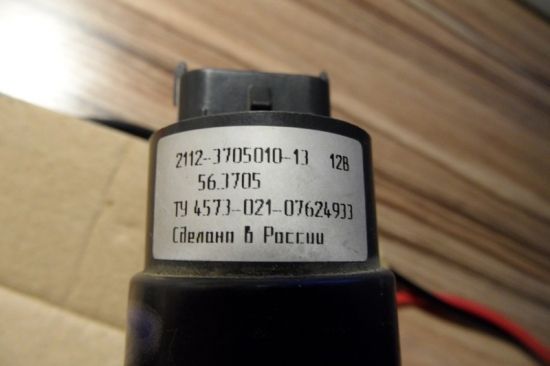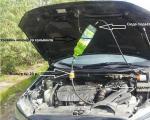Symptoms of a failed ignition coil. When it's her problem
Many drivers would like to know the symptoms of a failed ignition coil. "Reel", as it is often called by experienced drivers, sometimes brings surprises to drivers of cars with a gasoline engine. Unfortunately, a large number of motorists do not know what it is, why you need a car, how to find out about the problems that have arisen with it.
This device plays an important role in the operation of gasoline engines; without it, it simply will not start. The main purpose of this device on a car is to supply a high-voltage discharge to spark plugs.
Symptoms of a failed ignition coil it is desirable for all drivers to know in order to navigate their further actions. Many of them can be avoided, some can be eliminated with your own hands. With our story, we will try to reveal the principle of sparking, as well as the main signs of “reel” malfunctions.

A little about the device
If you disassemble it (if you want to do this, you need to be very careful, the coil body is filled with transformer oil), you can see that this is an ordinary step-up transformer. The primary winding operates from the on-board network of the machine, and the secondary increases it to a value equal to 25-30 thousand volts. Such a high voltage is needed to create a spark on the candles in order to ignite the combustible mixture in the engine cylinder.
Such a device in the ignition system is available in all gasoline engines, regardless of whether they are carburetor or injection. Some injection motors have a coil for each cylinder. They receive control pulses from the ignition distributor, and the coil can receive the primary voltage from the on-board network or from the electronic switch.

Symptoms
The most important sign of a breakdown is the inability to start the engine, and it does not matter if it is cold or hot. Systematic failures appear in the operation of the motor, according to the words of the drivers, it “troit”. A sharp press on the gas pedal also causes tangible. In cars with injection motors, a signal may appear on the dashboard about problems with the ignition coil.
A malfunction can clearly manifest itself in wet rainy weather, which will be expressed by unstable operation of the motor. Also, a signal about problems in this node will be its heating. This can happen with a short circuit in the secondary winding. Interruptions in operation can be caused by damage to the insulation in the area where the high voltage wire is connected, in which case the spark will “run away” to the nearest metal part of the machine.
Why do breakdowns happen?
There are many reasons for failures, but we will try to analyze all possible cases. Candles of poor quality, defective, with a broken insulator, significantly reduce the life of this device. Another reason for failure can be overheating of the "reel". It can be caused by various reasons. The design of the coil provides for its heating.
By design, it has a certain number of heating and cooling cycles, so if this happens too often, this leads to a reduction in the life of the device.
Overheating can occur if there is a problem with the cooling system, or if a rich fuel mixture is supplied to the engine cylinders. All this affects the condition of the rubber insulators, which lose their elasticity, so a high voltage breakdown occurs, which greatly affects the performance of the coil.
On cars with a classic sparking system, cases of its failure occur when the ignition is on and the engine is not running. If at this moment the distributor contacts are in a closed state for a long time, the winding heats up and the insulation of the low-voltage winding is broken.

How to check the correctness yourself?
This can be done in several ways, even in the absence of special equipment. On the "classic" you can pull out the high-voltage wire from the distributor cap and turn the engine over with a starter. The wire from the coil should be kept near the mass of the car. A blue spark should jump between the wire and ground.
Its absence will indicate the "inactivity" of the "bobbin", but one more check should be carried out. The fact is that there may be a bad contact in the contact group. This is easy to check if, when the ignition is on, the contact group is periodically opened with an insulated object, a spark should appear between the wire and the vehicle ground.
In the absence of sparking in all of the above cases, the on-board voltage supply to the primary winding should be checked. It is easy to check this, it is necessary to measure the voltage at the terminals of the primary winding of the coil with a multimeter or tester with the ignition on. Its presence confirms problems with it, and its absence encourages further troubleshooting.
You can still continue to talk about the problems with this device. After all, there are also special devices for testing this system. We hope that the symptoms of ignition coil malfunctions described in this article will help car owners to independently determine possible malfunctions in the ignition system.




